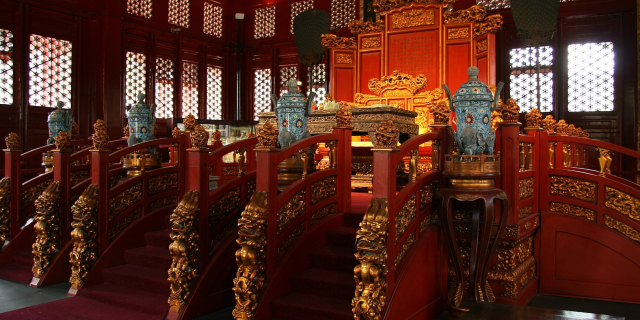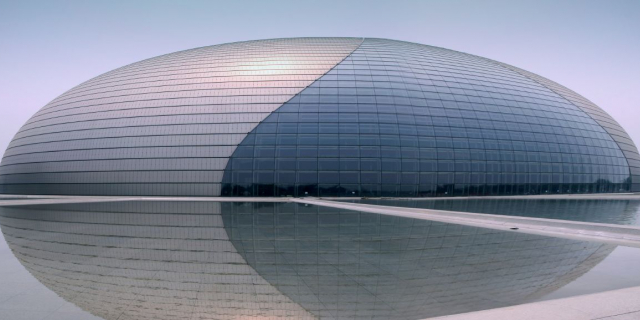The Drum Tower of Beijing, or Gulou (traditional Chinese: 鼓樓; simplified Chinese: 鼓楼; pinyin: Gǔlóu), is situated at the northern end of the central axis of the Inner City to the north of Di'anmen Street. Originally built for musical reasons, it was later used to announce the time and is now a tourist attraction.
The Bell Tower of Beijing, or Zhonglou (traditional Chinese: 鐘樓; simplified Chinese: 钟楼; pinyin: Zhōnglóu), stands closely behind the drum tower. Together, the Bell Tower and Drum Tower have panoramic views over central Beijing. Before the modern era, both towers dominated the Beijing skyline.
The Drum Tower was built in 1272 during the Yuan dynasty. At that time the city was called Khanbaliq and the tower was named the Tower of Orderly Administration (Chinese: 齐政楼; pinyin: Qízhènglóu).[1] In 1420, during the reign of the Yongle Emperor, the building was rebuilt to the east of its original site. The Qing dynasty carried out important renovations in 1800.[1] Following the Beijing Coup in 1924, Feng Yuxiang removed the official status of the towers, replacing them with Western time-keeping methods, and renamed the building as the Tower of Clarifying Shame (Chinese: 明耻楼; pinyin: Míngchǐlóu). Objects related to the Eight-Nation Alliance's invasion of Beijing and later the May 30 Massacre of 1925 were put on display, turning the towers into a museum. The upper story of the Drum Tower currently serves as the People's Cultural Hall of the Dongcheng District.[1]
In the 1980s, after much repair work, the Bell and Drum Towers were opened to tourists.
During the 2008 Summer Olympics, held in Beijing, three people were stabbed at the Drum Tower, resulting in one death.[2]


































Add new comment